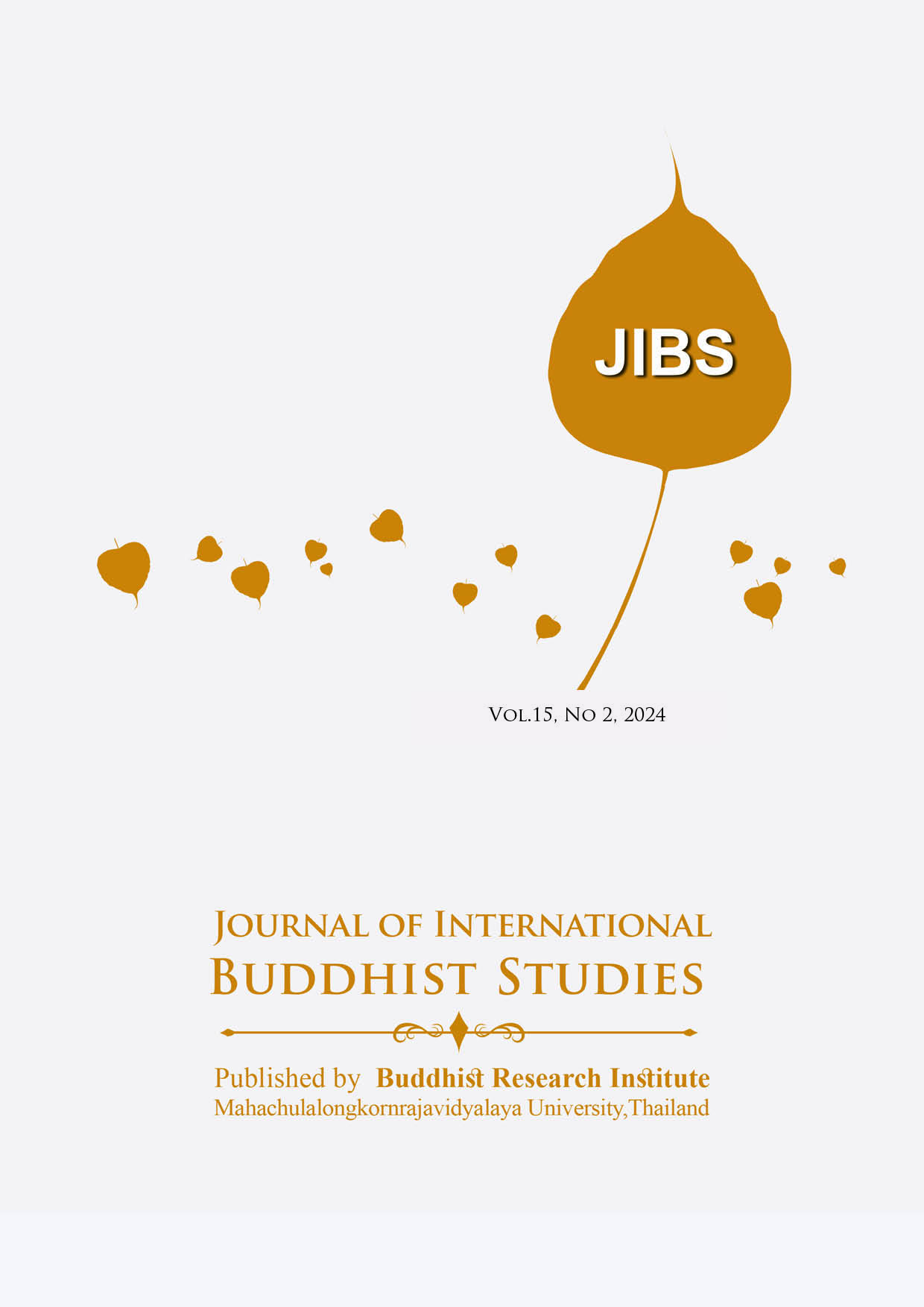Marvel as Superhuman Power Performance (Iddhi-pāṭihāriya) in Dhammapada Scriptures
Keywords:
Iddhi-pāṭihāriya, Buddhism, Dhammapadaṭṭhakathā, Marvel, Superhuman Power PerformanceAbstract
This article aims to understand the power of miracles that appeared in Dhammapada scriptures from the Theravāda Buddhist perspective. Notwithstanding, the author does not attempt to criticize the accuracy or credibility of the stories recorded as evidence in the Buddhist scriptures. Marvel as superhuman power performance or iddhi-pāṭihāriya in Pali depicts supernatural phenomena or extraordinary things. It is the product of human mental training grounded on the belief that certain phenomena are beyond the laws of nature and science. They cannot be proven by any scientific instruments. In real life, human beings invented innovations to fulfill their needs, imagination and dreams. They are just physical miracles created under the fundamental laws of physics of space-time. In Dhammapadaṭṭhakathā, commentary to the Dhammapada, magical events appeared overwhelmingly throughout the books in which the author has selected just some of them to present and analyze in this paper. The Buddha himself, like all previous Buddhas, performs the twin miracle (yamakapāṭihāriya). Including his disciples who are qualified to perform miracles in different times and places. Moreover, non-Buddhist ascetics were also able to demonstrate these magics through the form of pseudo sciences (tiracchānavijjā). It is worth noting that the Buddha laid down the Discipline to not allow monks to perform any miracles. What was the true reason? It is a great challenge for Buddhists to find the answers.
References
A. Primary Sources
Norman, K. R. (trans.). The Word of the Doctrine (Dhammapada. Oxford: PTS, 1997.
Walshe, Maurice (trans.). Thus Have I Heard: The Long Discourses of the Buddha (Dīgha Nikāya). London: Wisdom Publicaitons, 1987.
Ñānamoli, Bhikkhu (trans.). The Path of Discrimination (Paṭisambhidāmagga). London: PTS, 1982.
Pali Language
Davids, T.W. Rhys and J. Estlin Carpenter (eds.). The Dīgha Nikāya. Vol.I. London: PTS, 1975.
Hinuber, O. von and K.R. Norman (eds.). Dhammapada. Oxford: PTS, 1995.
Taylor, Arnold C. Paṭisambhidāmagga. Vol. II. London: PTS, 1979.
B. Secondary Sources
Burlingame, Eugene Watson (trans.). Buddhist Legends (Dhammapada Commentary). Translation of Books 1 and 2. Cambridge: Harvard University Press, 1921.
______. Buddhist Legends (Dhammapada Commentary). Translation of Books 3 to 12. Cambridge: Harvard University Press, 1921.
______. Buddhist Legends (Dhammapada Commentary). Translation of Books 13 to 26. Cambridge: Harvard University Press, 1921.
Davids, T.W. Rhys and William Stede (eds.). The Pali Text Society’s Pali-English Dictionary. Part V (P-Ph.). 8 Vols. Set. London: PTS, 1923.
Jayawikrama, N.A. (trans.). Inception of Discipline and the Vinaya Nidāna. London: PTS by Luzac & Company Ltd., 1962.
Mahatthanadull, Sanu; Phramaha Nantakorn Piyabhani; Orachorn Kraichakr; and Sarita Mahatthanadull. “A Conceptual Model of Bi-Dimensional Development for Happiness Access by Biofeedback Process.” Journal of MCU Peace Studies 8, (March-April 2020): 377-387.
Pali Language
De Silva, Lily (ed.). The Dīgha-Nikāya Atthakathātīkā Līnatthavaṇṇanā, Vol.III. London: PTS by Luzac & Company LTD., 1970.
H.C. Norman (ed.), The Commentary on the Dhammapada, Vol.1 Part I, London: Luzac & Company, Ltd., 1970.
Norman, H. C. (ed.). The Commentary on the Dhammapada. Vol. III. London: Luzac & Company, LTD.,
Stede, W. (ed.). The Sumaṅgala-Vilāsinī Buddhaghosa’s Commentary on the Dīgha-Nikāya, Part III. (Suttas 21-34). London: PTS by Luzac & Company LTD., 1971.
Takakusu, J. and M Nagai. Samantapāsādikā: Buddhaghosa’s Commentary on the Vinaya Piṭaka. Vol. I. London: PTS, 1975.
Downloads
Published
How to Cite
Issue
Section
License
Copyright (c) 2024 Journal of International Buddhist Studies

This work is licensed under a Creative Commons Attribution 4.0 International License.







